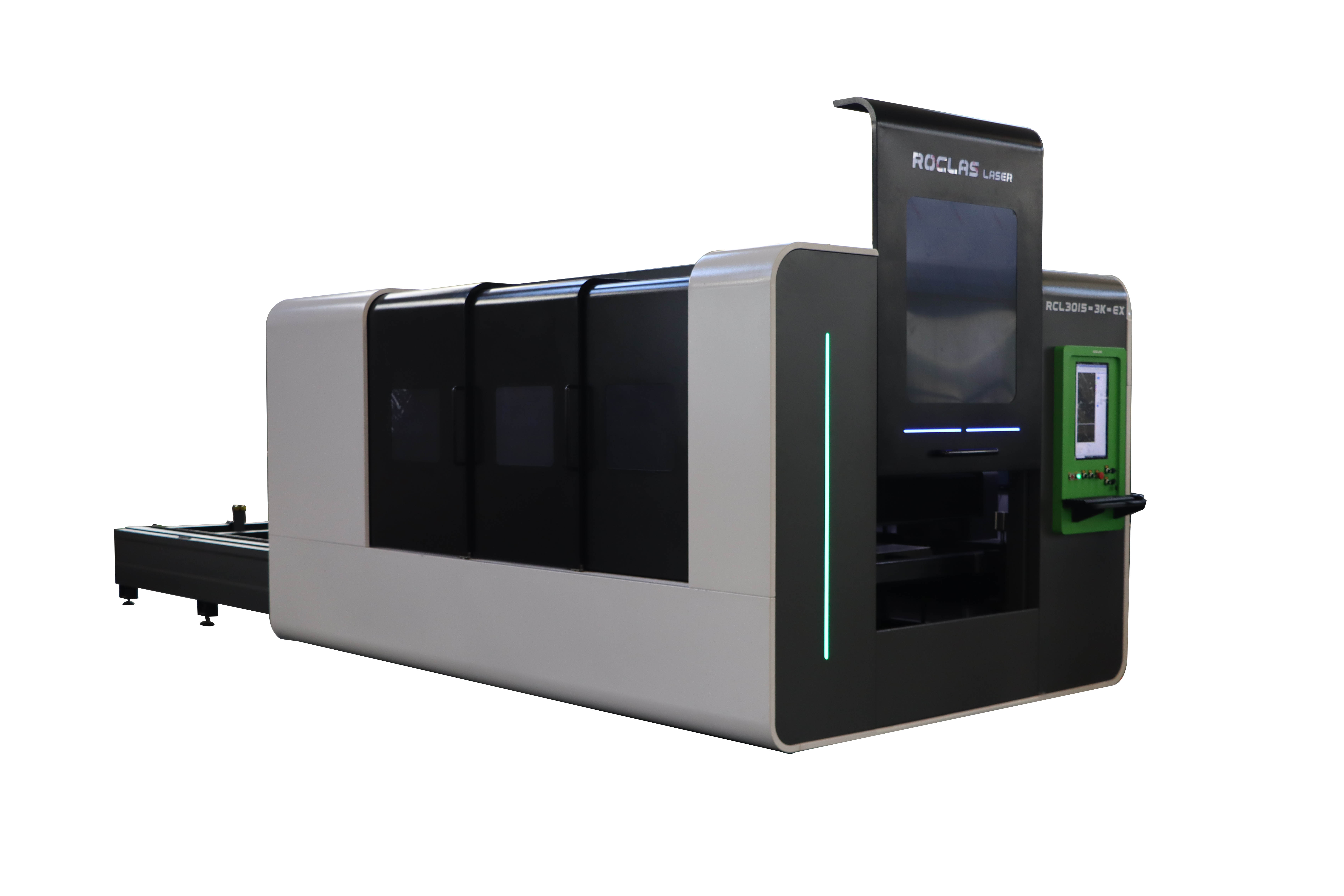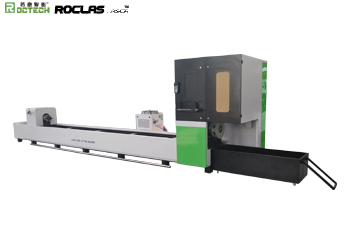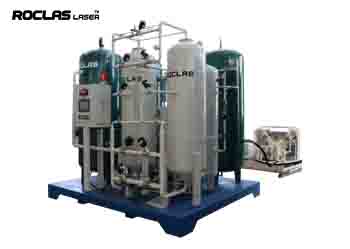Máy cắt laser đã trở thành công cụ không thể thiếu trong các ngành công nghiệp khác nhau, từ sản xuất đến nghệ thuật và thủ công. Độ chính xác, tốc độ và tính linh hoạt của chúng làm cho chúng trở thành lựa chọn ưa thích để cắt một loạt các vật liệu, bao gồm kim loại, gỗ, nhựa và nhiều hơn nữa. Tuy nhiên, một trong những yếu tố quan trọng nhất mà các doanh nghiệp và cá nhân xem xét trước khi đầu tư vào máy cắt laser là chi phí. Bài viết này chiều sâu vào các khía cạnh khác nhau ảnh hưởng đến chi phí của máy cắt laser, giúp bạn đưa ra quyết định thông minh.
1. Các loại máy cắt laser
Chi phí của máy cắt laser phụ thuộc rất nhiều vào loại của nó. Có ba loại chính của máy cắt laser:
- Máy cắt laser CO2: Đây là các loại phổ biến và linh hoạt nhất, phù hợp cho việc cắt, khắc và đánh dấu một loạt các vật liệu. Chúng thường có giá cả phải chăng hơn so với các loại khác nhưng có thể có chi phí bảo trì cao hơn do nhu cầu bổ sung khí thường xuyên.

Máy cắt laser sợi: Được biết đến với hiệu quả và độ chính xác của họ, laser sợi đặc biệt hiệu quả để cắt kim loại. Chúng đắt hơn laser CO2 nhưng cung cấp chi phí hoạt động thấp hơn và tuổi thọ dài hơn.
- Máy cắt laser Nd: YAG/Nd: YVO4: Đây là những máy chuyên dụng cho các ứng dụng có độ chính xác cao như ngành y tế và hàng không vũ trụ. Chúng là loại đắt nhất do công nghệ tiên tiến và các trường hợp sử dụng chuyên dụng.
2. Sức mạnh và hiệu suất

Công suất laser tính bằng watt là một yếu tố quan trọng trong việc xác định chi phí của máy cắt laser. Máy có công suất cao hơn có thể cắt các vật liệu dày hơn, mạnh hơn, nhưng chúng cũng có giá cao hơn. Ví dụ, máy cắt laser CO2 100W có giá khoảng 5.000 đô la, trong khi mô hình 150W có thể có giá lên tới 10.000 đô la. Laser sợi quang hiệu quả hơn, với giá khởi điểm khoảng 20.000 USD cho máy 1kW và 100.000 USD trở lên cho các mô hình cấp công nghiệp.
3. Kích thước máy và khu vực làm việc

The size of the laser cutting machine and its work area also impact the cost. Larger machines with bigger work areas are more expensive because they require more materials and advanced engineering to ensure stability and precision. For example, a desktop laser cutter with a small work area might cost around $3,000, while a large-format industrial machine could cost $50,000 or more.
4. Brand and Manufacturer
The brand and manufacturer of the laser cutting machine play a crucial role in its cost. Well-known brands with a reputation for quality and reliability, such as Trumpf, Amada, and Bystronic, often charge a premium for their machines. On the other hand, lesser-known brands or Chinese manufacturers may offer more affordable options, but the quality and after-sales support can vary significantly.
5. Additional Features and Accessories
Laser cutting machines come with a range of additional features and accessories that can influence the overall cost. Some of these include:
- Automatic Focus: This feature adjusts the laser focus automatically, ensuring consistent cutting quality. It adds to the cost but can significantly improve efficiency.
- Rotary Attachment: A rotary attachment allows for the cutting and engraving of cylindrical objects, such as bottles and tubes. This accessory can add several thousand dollars to the machine's price.
- Cooling System: High-powered lasers generate a lot of heat and require an efficient cooling system. Water-cooled systems are more expensive than air-cooled ones but are essential for maintaining the machine's performance and longevity.
- Software: The software that controls the laser cutter can also affect the cost. Advanced software with more features and better user interfaces tends to be more expensive but can enhance the machine's capabilities and ease of use.
6. Operating Costs
While the initial purchase price is a significant consideration, it's also essential to factor in the operating costs of a laser cutting machine. These include:
- Energy Consumption: Higher-powered machines consume more electricity, leading to higher energy bills. Fiber lasers are generally more energy-efficient than CO2 lasers, which can offset their higher initial cost over time.
- Maintenance: Regular maintenance is crucial for keeping a laser cutter in optimal condition. This includes replacing laser tubes, mirrors, lenses, and other consumables. CO2 lasers, in particular, require more frequent maintenance, which can add to the overall cost.
- Gas and Consumables: CO2 lasers require a constant supply of gas (usually CO2, nitrogen, or helium) to operate, which can be a recurring expense. Fiber lasers, on the other hand, do not require gas, reducing their operating costs.
7. Market Trends and Demand
The cost of laser cutting machines can also be influenced by market trends and demand. For example, the increasing adoption of automation and Industry 4.0 technologies has led to a surge in demand for advanced laser cutting machines, driving up prices. Conversely, economic downturns or increased competition among manufacturers can lead to lower prices.
8. Used vs. New Machines
Another factor to consider is whether to purchase a new or used laser cutting machine. Used machines can be significantly cheaper, but they may come with hidden costs, such as the need for repairs or upgrades. It's essential to thoroughly inspect a used machine and consider its remaining lifespan before making a purchase.
9. Financing and Leasing Options
For businesses that cannot afford the upfront cost of a laser cutting machine, financing and leasing options are available. These can spread the cost over several years, making it more manageable. However, it's important to consider the interest rates and terms of the financing agreement, as they can add to the overall cost.
10. Return on Investment (ROI)
Finally, when considering the cost of a laser cutting machine, it's crucial to evaluate the potential return on investment (ROI). A more expensive machine with higher capabilities may lead to increased productivity, reduced material waste, and the ability to take on more complex projects, ultimately generating more revenue. It's essential to weigh the initial cost against the potential long-term benefits.
Conclusion
The cost of a laser cutting machine is influenced by a multitude of factors, including the type of laser, power, size, brand, additional features, operating costs, market trends, and whether the machine is new or used. Understanding these factors can help you make an informed decision that aligns with your budget and business needs. While the initial investment may be significant, the precision, efficiency, and versatility of laser cutting machines can offer substantial long-term benefits, making them a valuable asset for any business involved in cutting and engraving.
Cho dù bạn cần tư vấn chung hoặc hỗ trợ cụ thể, chúng tôi sẵn lòng hỗ trợ bạn.